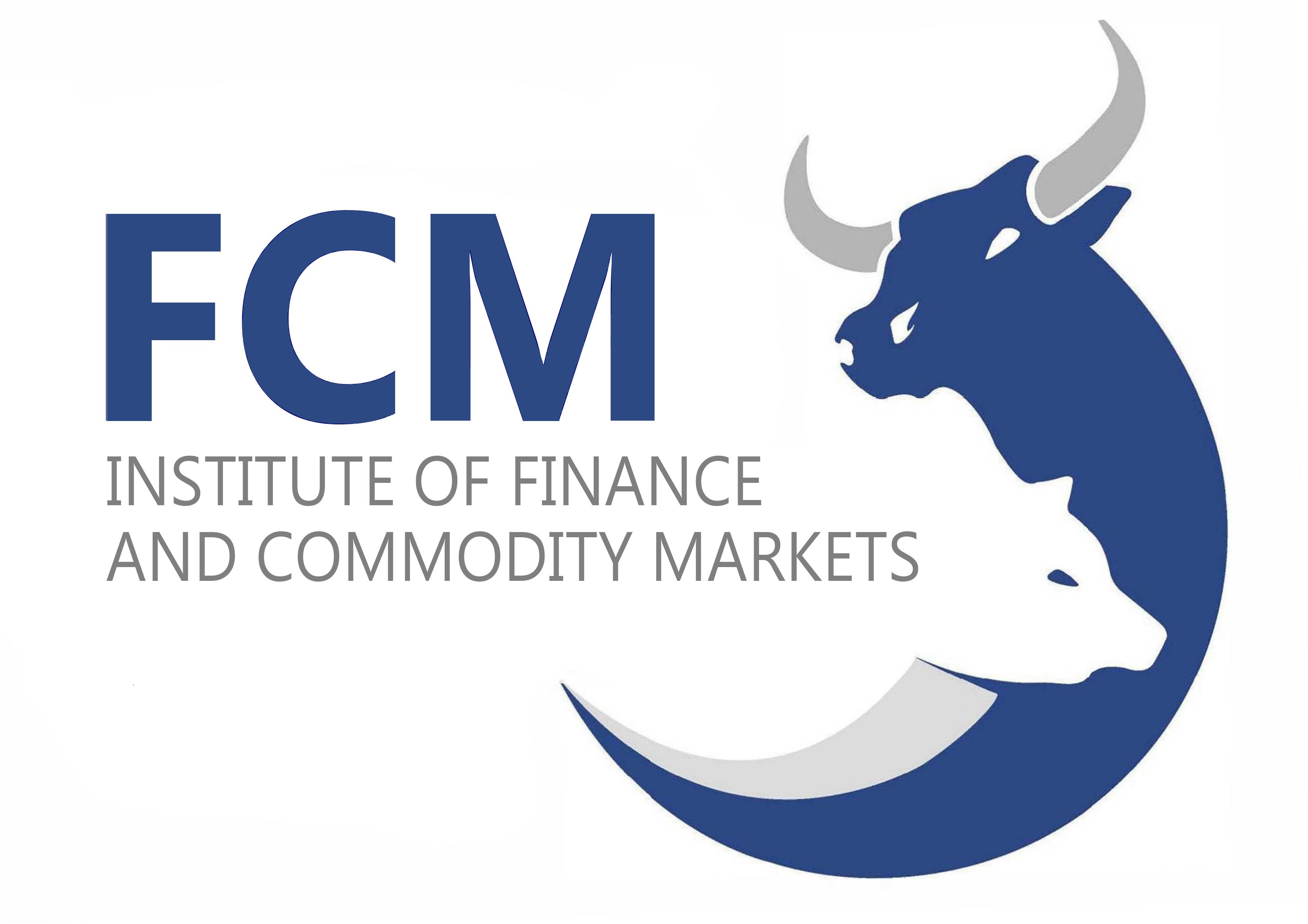Hints for your thesis
In May and June of each year, no registration is possible.
On the first Wednesday in July, the preference-based topic assignment takes place, and the topics are presented for this purpose at the end of June. You must then register your bachelor thesis by the end of July.
You must start your bachelor thesis no later than November 30, should you wish to register your bachelor thesis between August and November, you can choose from the remaining topics (first-come-first-served principle).
In December and January of each year, no registration is possible.
On the first Wednesday in February the preference-based topic allocation takes place, the topics are presented for this purpose at the end of January. You must register your bachelor thesis by the end of February.
You must start your bachelor thesis no later than April 30, should you wish to register your bachelor thesis in March or April, you can choose from the remaining topics (first-come-first-served principle).
| Month | Registration | Start your thesis until |
| January | not possible | not possible |
| February | Preference-based | 30th April |
| March | First Come, First Serve | 30th April |
| April | First Come, First Serve | 30th April |
| Mai | not possible | not possible |
| June | not possible | not possible |
| July | Preference-based | 30th November |
| August | First Come, First Serve | 30th November |
| September | First Come, First Serve | 30th November |
| October | First Come, First Serve | 30th November |
| November | First come, First Serve | 30th November |
| December | not possible | not possible |
Bachelortheses
If you are interested to write your thesis at this institute, please send a numbered list with at least five topic preferences to Mr. Kowalke.
Online Submission
If you subsmit your thesis online to the dean of studies, please set your supervisor in Cc.
Mastertheses
If you are interested to write your masterthesis at the institute of financial markets, please write an eMail to Prof. Dr. Marcel Prokopczuk. Send your curriculum vitae, the most recent transcript of records and your final transcript of records from your Bachelor with your eMail. In addition to the topics below, you can suggest a new topic.
Proposed topics Bachelor theses
Bachelortheses topics in the area of Capital Markets and Investments
-
Testing the Arbitrage Pricing Theory
Task:
- Ross (1976) has developed the Abitrage Pricing Theory (APT) as a general theory for pricing assets. The basis of this theory is no-arbitrage. Chen et al. (1986) provide an empirical examination of the APT.
- Review of the literature on the APT.
- Empirically test the APT using a European dataset.
Basic Literature:
- Chen, N.-F., Roll, R., & Ross, S. A. (1986). Economic Forces and the Stock Market. Journal of Business, 59(3), 383-403
Advisor for your thesis
-
Multi-Factor Models
Task:
- Based on the failure of the CAPM, researchers have developed several empirical asset pricing models.
- Empirical examination of the German stock market on the basis of the Fama-French 3-Factor Model and Carhart 4-Factor Model.
- Compute the factors yourself and test whether the models can price assets via a GRS test.
Basic Literature:
- Carhart, M. M. (1997). On persistence in mutual fund performance. Journal of Finance, 52(1), 57-82.
- Fama, E. F., & French, K. R. (1993). Common Risk Factors in the Returns on Stocks and Bonds. Journal of Financial Economics, 33(1), 3–56.
- Gibbons, M. R., Ross, S. A., & Shanken, J. (1989). A test of the efficiency of a given portfolio. Econometrica: Journal of the Econometric Society, 1121-1152.
Advisor for your thesis
-
The Conditional CAPM
Task:
- The static version of the Capital Asset Pricing Model (CAPM) fails in explaining cross-sectional differences between stock returns. However, one possible reason for this could be time-variation in beta factors.
- Theoretical description of different versions of the conditional CAPM.
- Empirical evaluation of the conditional CAPM with a European dataset.
Basic Literature:- Jagannathan, R., & Wang, Z. (1996). The conditional CAPM and the cross‐section of expected returns. Journal of Finance, 51(1), 3-53.
- Lewellen, J., & Nagel, S. (2006). The conditional CAPM does not explain asset-pricing anomalies. Journal of Financial Economics, 82(2), 289-314.
Advisor for your thesis
-
Beta Estimation with Prior Information
Task:
- Prior information can be useful to hedge the measurement error in beta estimates. There are several possibilities of how to make use of this prior information. It can either be taken from the whole cross-sectional distribution or a subset of firms with similar characteristics.
- Empirical investigation of the performance of betas estimated with prior information.
Basic Literature:
- Karolyi, G. A. (1992). Predicting risk: Some new generalizations. Management Science, 38(1), 57-74.
- Vasicek, O. A. (1973). A Note on Using Cross‐sectional Information in Bayesian Estimation of Security Betas. Journal of Finance, 28(5), 1233-1239.
Advisor for your thesis
-
The Fama MacBeth Test of the CAPM
Task:
- The Sharpe-Lintner-Mossin-Treynor CAPM is one of the most successful and widely used financial models to date.
- Explain its assumptions, short derivation, intuition, and its (testable) implications.
- Fama and MacBeth (1973) develop a testing procedure that is simple and so flexible that it is widely used in finance research.
- Explain the procedure and perform a test of the CAPM following Fama and MacBeth (1973).
Basic Literature:
- Fama, E. F., & MacBeth, J. D. (1973). Risk, return, and equilibrium: Empirical tests. Journal of political economy, 81(3), 607-636
Advisor for your thesis
-
Comparing Cross-Section and Time-Series Factor Models
Task:
- The Fama and Macbeth (1973) cross-sectional regression is a prominent methodology for finding dependence between average returns and asset characteristics. It serves as primary motivation for prominent factor models in time-series asset pricing. However, Fama and French (2020) propose an improved version of the Fama and MacBeth (1973) methodology. They suggest exchanging well-established time-series factors with cross-sectional factors. Their research shows that cross-sectional factors capture the rich variation in returns in time-series tests better than traditional characteristics-based time-series factors.
- Conduct a literature review on the empirical approach and evaluation of asset pricing factor models.
- Empirically test and compare prominent factor models using time-series and cross-sectional factors to evaluate their pricing ability of well-known asset pricing anomalies.
Basic Literature:
-
Fama, E. F., and K. R. French. (2020). Comparing cross-section and time-series factor models. The Review of Financial Studies 33(5), 1891-1926.
-
Fama, E. F., and J. D. MacBeth. (1973). Risk, return, and equilibrium: empirical tests. Journal of Political Economy 81, 607–36.
-
Fama, E. F., and K. R. French. (2015). A five-factor asset pricing model. Journal of Financial Economics 116, 1–22.
Advisor of your thesis
-
Infrequent Trading and Beta Estimation
Task:
- If stocks are traded infrequently, betas of these stocks will be biased downward. Scholes and Williams (1977) and Dimson (1979) propose ways to adjust the estimates to be robust to this.
- Empirical investigation of the performance of betas that account for infrequent trading using the method of McInish et al. (1986) for the German stock market.
Basic Literature:
- Dimson, E. (1979). Risk measurement when shares are subject to infrequent trading. Journal of Financial Economics, 7(2), 197-226.
- McInish, T. H., & Wood, R. A. (1986). Adjusting for beta bias: An assessment of alternate techniques: A note. Journal of Finance, 41(1), 277-286.
- Scholes, M., & Williams, J. (1977). Estimating betas from nonsynchronous data. Journal of Financial Economics, 5(3), 309-327.
Advisor for your thesis
-
Idiosyncratic Volatility
Task:
- According to classical theory, idiosyncratic volatility can be fully diversified and, thus, should not be priced in the market. However, Ang et al. (2006) show that idiosyncratic volatility is strongly negatively priced, a finding which is often referred to as “idiosyncratic volatility puzzle”.
- Review of the literature on idiosyncratic volatility.
- Empirical evaluation of the idiosyncratic volatility puzzle for a European dataset.
Basic Literature:
- Ang, A., Hodrick, R. J., Xing, Y., & Zhang, X. (2006). The cross‐section of volatility and expected returns. Journal of Finance, 61(1), 259-299.
- Ang, A., Hodrick, R. J., Xing, Y., & Zhang, X. (2009). High idiosyncratic volatility and low returns: International and further US evidence. Journal of Financial Economics, 91(1), 1-23.
- Bali, T. G., & Cakici, N. (2008). Idiosyncratic volatility and the cross section of expected returns. Journal of Financial and Quantitative Analysis, 43(01), 29-58.
Advisor for your thesis
-
Betting Against Beta
Task:
- One popular explanation for the failure of the classical CAPM are so-called leverage-constraints. Because leverage is limited, investors have to buy high-beta stocks to increase the risk of their portfolio. High demand for these stocks causes them to have negative alphas and the empirical security market line to be too flat relative to the predictions by the CAPM.
- Theoretical examination of leverage-constraints.
- Empirical investigation of the performance of a betting-against-beta strategy.
Basic Literature:
- Black, F. (1972). Capital market equilibrium with restricted borrowing. Journal of Business, 45(3), 444-455.
- Frazzini, A., & Pedersen, L. H. (2014). Betting against beta. Journal of Financial Economics, 111(1), 1-25.
Advisor for your thesis
-
Liquidity Risk
Task:
- For illiquid stocks, trading a large position can substantially change the market price. If investors hold these illiquid stocks and they have to liquidate their position, this can create substantial costs. Hence, investors might require a premium for holding illiquid stocks.
- Theoretical description of how liquidity might affect asset prices.
- Empirical evaluation of liquidity risk for a European dataset.
Basic Literature:
- Amihud, Y. (2002). Illiquidity and stock returns: cross-section and time-series effects. Journal of Financial Markets, 5(1), 31-56.
- Pastor, L., & Stambaugh, R. F. (2001). Liquidity risk and expected stock returns. Journal of Political Economy, 111, 642-685.
Advisor for your thesis
-
The Momentum Anomaly
Task:
- The momentum anomaly describes a pattern that in the medium term, “losers” on average continue to be “losers” and winners tend to further appreciate in their prices.
- First review the empirical and theoretical literature on the momentum anomaly.
- Empirically investigate momentum using portfolio sorts or regression tests.
Basic Literature:
- Goyal, A., & Jegadeesh, N. (2017). Cross-Sectional and Time-Series Tests of Return Predictability: What Is the Difference? Review of Financial Studies, 31(5), 1784-1824.
- Jegadeesh, N., & Titman, S. (1993). Returns to buying winners and selling losers: Implications for stock market efficiency. Journal of Finance, 48(1), 65-91.
Advisor for your thesis
-
Short-term Reversal
Task:
- In the stock market, monthly returns seem to be negatively autocorrelated. That is, there is a short-term reversal effect in stock prices.
- First review the empirical and theoretical literature on short-term reversal.
- Empirically investigate short-term reversal using portfolio sorts or regression tests.
Basic Literature:
- Jegadeesh, N. (1990). Evidence of predictable behavior of security returns. Journal of Finance, 45(3), 881-898.
Advisor for your thesis
-
The Value Anomaly
Task:
- In international stock markets, a prominent feature is that stocks with high book-to-market ratios (“value stocks”) typically outperform those with low book-to-market ratios (“growth stocks”).
- First review the empirical and theoretical literature on the value effect.
- Empirically investigate value strategies using portfolio sorts or regression tests.
Basic Literature:
- Asness, C. S., Moskowitz, T. J., & Pedersen, L. H. (2013). Value and momentum everywhere. Journal of Finance, 68(3), 929-985.
- Fama, E. F., & French, K. R. (1992). The cross‐section of expected stock returns. Journal of Finance, 47(2), 427-465.
Advisor for your thesis
-
Taming the Factor Zoo with Machine Learing
Task:
- As the asset pricing literature continues to produce more and more factors, a fundamental task is to determine which factors are truly relevant for pricing purposes and how to assess whether a new factor adds explanatory power for asset pricing, relative to the hundreds of factors already produced. One solution to this problem is the implementation of machine learning techniques that can handle the high-dimensional nature of this issue.
- Conduct a literature review on the application of machine learning techniques to factor models in asset pricing and how machine learning can discipline factor selection.
- Systematically evaluate existing factors regarding their explanatory power for asset pricing purposes using machine learning techniques.
Basic Literature:
- Feng, G., Giglio, S., & Xiu, D. (2020). Taming the factor zoo: A test of new factors. The Journal of Finance, 75(3), 1327-1370.
- Gu, Shihao, Bryan Kelly, und Dacheng Xiu. (2020). „Empirical Asset Pricing via Machine Learning“ The Review of Financial Studies 33(5): 2223–73.
- Gu, Shihao, Bryan Kelly, und Dacheng Xiu. (2021). „Autoencoder Asset Pricing Models“. Journal of Econometrics 222(1): 429–50.
Advisor for your thesis
-
Which Machine Learning Method for Asset Pricing?
Task
- The recent literature on asset pricing that employs machine learning techniques for return predictions shows significant improvements compared to leading regression-based methods. However, there are numerous machine learning techniques available for this purpose, leaving the question of which method to use.
- Conduct a literature review on the application of machine learning techniques for predicting asset returns.
- Empirically analyze and compare the performance of different machine learning algorithms in predicting asset returns.
Basic Literature
-
Gu, Shihao, Bryan Kelly, und Dacheng Xiu. (2020). „Empirical Asset Pricing via Machine Learning“ The Review of Financial Studies 33(5): 2223–73.
-
Gu, Shihao, Bryan Kelly, und Dacheng Xiu. (2021). „Autoencoder Asset Pricing Models“. Journal of Econometrics 222(1): 429–50.
Advisor of your thesis
-
Technical Analysis: Price-based Indicators
Task:
- In the last decades the technical analysis (TA) has been developed as a possibility to forecast future price movements. The TA represents an alternative to the fundamental analysis. Both approaches contradict the predictions of the well-known‚ Efficient Market Hypothesis‘ (Fama, 1972), but might lead to profitable trading strategies.
- The objective is to introduce the TA, particularly with focus on price-based indicators.
- Further, to develop and evaluate trading strategies based on the introduced indicators for the stock market.
Basic Literature:
- Bodie, Z., Kane, A., & Marcus, A. J. (2014). Investments. 10th Ed., McGraw-Hill: New York.
- Chen, J. (2010). Essentials of Technical Analysis for Financial Markets. John Wiley & Sons: New Jersey.
Advisor for your thesis
-
Mutual Fund Performance
Task:
- Review of the literature on mutual fund performance.
- Empirical examination of the profitability of actively managed portfolios compared to index funds / passively managed funds.
Basic Literature:
- Fortin, R., & Michelson, S. (2002). Indexing versus active mutual fund management. Journal of Financial Planning, 15(9), 82-95.
- Sharpe, W. F. (1991). The arithmetic of active management. Financial Analysts Journal, 47(1), 7-9.
- Sharpe, W. F. (1992). Asset allocation: Management style and performance measurement. Journal of Portfolio Management, 18(2), 7-19.
- Goetzmann, W., Ingersoll, J., & Spiegel, M. (2007). Portfolio Performance Manipulation and Manipulation-proof Performance Measures. Review of Financial Studies, 20(5), 1503-1546.
Advisor for your thesis
-
The Performance of Sharia-Compliant Funds
Task:
- During the recent years, the demand for financial products that are in accordance with certain ethical standards has increased. For example, there are certain products and funds that seek strategies aligned with Islamic law. Typically, these strategies exclude certain products and sectors, which might cost diversification benefits.
- Theoretical underpinnings and requirements of sharia-compliant products.
- Empirical evaluation mutual funds that are sharia-compliant vs. usual funds.
Basic Literature:
- Zaher, T. S., & Kabir Hassan, M. (2001). A comparative literature survey of Islamic finance and banking. Financial Markets, Institutions & Instruments, 10(4), 155-199.
- Derigs, U., & Marzban, S. (2008). Review and analysis of current Shariah-compliant equity screening practices. International Journal of Islamic and Middle Eastern Finance and Management, 1(4), 285-303.
- Sadeghi, M. (2008). Financial performance of Shariah-compliant investment: evidence from Malaysian stock market. International Research Journal of Finance and Economics, 20, 15-26.
Advisor for your thesis
-
The Asset Class of Cryptocurrencies
Task:
- In the last years cryptocurrencies gained a lot of attention in capital markets, for example after the introduction of an ETF.
- Create an overview of the literature about cryptocurrencies.
- Present the empirical facts of cryptocurrencies and investigate which asset class they belong to and which factors influence them.
Basic Literature:- Liu, Y., & Tsyvinski, A. (2020). Risks and Returns of Cryptocurrency. Review of Financial Studies, forthcoming.
Advisor for your final paper
-
Real Estate Asset Pricing
Task:
- REITS are exchange-traded real estate funds.
- Van Nieuwerburgh (2019) characterize them using standard asset pricing factor models.
- They find that they behave like small value stocks.
- Compute conditional risk exposures and alpha over time using rolling window estimation.
Basic Literature:
-
Van Nieuwerburgh, S. (2019). Why are REITs currently so expensive?. Real Estate Economics, 47(1), 18-65.
Advisor to your thesis
-
Risk Premia across Inflation Regimes
Task:
- Inflation may affect asset returns via multiple different channels. It is possible either to analyze an asset’s inflation risk or to analyze the change of other risk premia with respect to inflation to explain expected returns.
- Analyze the performance of selected asset classes across different inflation regimes. Consider varying risk premia.
Basic Literature:
- Boons, M., Duarte, F., De Roon, F., & Szymanowska, M. (2020). Time-varying inflation risk and stock returns. Journal of Financial Economics, 136(2), 444-470.
Advisor for your thesis
-
Economic Tracking Portfolios
Task:
- In markets, prices reflect information and expectations including macroeconomic variables.
Breeden suggests using a portfolio that tracks consumption to test the CCAPM.
- Lamont (2001) picks up the idea to forecast macroeconomic variables via economic tracking portfolios, which are portfolios of assets with returns that track an economic variable.
Try to build tracking portfolios and thus forecasts for non-US macros .
Literature:- Lamont, O. A. (2001). Economic tracking portfolios. Journal of Econometrics, 105(1), 161-184.
Advisor for your final paper
Bachelortheses topics in the area of derivatives and risk management
-
Valut-at Risk - Backtesting
Task:
- The VaR measures the risk of investments and estimates the potential loss over a certain period. The estimate is based on different assumptions and methods such as the historical VaR, the parametric VaR and the Monte Carlo simulations.
- While every method has its advantages and disadvantages the question arises which one to use for the companies. The evaluation of the VaR estimates is typically done by backtesting.
- Empirical investigation and comparison of different VaR methods with the means of backtesting.
Basic Literature:
- Hull, J. C., (2011). Options, Futures, and Other Derivatives. 8th ed., Prentice Hall.
- Christoffersen, P. F. (2012). Elements of financial risk management. 2nd ed., Academic Press.
- Jorion, P. (2001). Value at Risk. McGraw-Hill.
Advisor for your thesis
-
Duration and Convexity Hedging
Task:
- Describe the concepts of Duration and Convexity.
- Create a bond portfolio which is immunized against changes in the interest rate using the measures of Duration and Convexity.
- Evaluate the performance of this method based on simulations or empirical analyses.
Basic Literature:
- Chambers, D.R., Carleton, W. T. & McEnally, R. W. (1988). Immunizing Default-Free Bond Portfolios with a Duration Vector. The Journal of Financial and Quantitative Analysis, 23(1), 89-104.
- Bierwag, G.O., Fooladi, I. & Roberts, G. S. (1993). Designing an immunized portfolio: IS M-squared the key? Journal of Banking and Finance, 17(1), 1147-1170.
Advisor for your thesis
-
Currency Carry Trades
Task:
- The currency carry factor is based on investment in high interest countries, while borrowing in low interest countries. The existence of the strategies could be traced to exploitable disparities in global macroeconomic conditions.
- Investigate the returns of currency carry strategies with multiple predictors.
Basic Literature:
- Bakshi, G. and Panayotov, P. (2013). Predictability of currency carry trades and asset pricing implications. Journal of Financial Economics, 17(1), 139-163.
Advisor for your thesis
-
Commodity Carry
Task:
- The Theory of normal backwardation states that the term structure of commodity futures Prices should determine the risk premium. A commodity carry strategy is taking advantage of this and invests in long run futures and sells short run futures. The concept of carry originated in the currency market and is transformed into multiple markets.
- Calculate the returns of commodity carry strategies, following Koijen et al. (2018).
Basic Literature:
- Gorton, G. B., Hayashi, F., & Rouwenhorst, K. G. (2012). The fundamentals of commodity futures returns. Review of Finance, 17(1), 35-105.
- Koijen, R. S.J., Moskowitz, T. J., Pedersen, L. H., & Vrugt, E. B. (2018). Carry. Journal of Financial Economics, 127(2), 197-225.
Advisor for your thesis
-
Expectations Hypothesis Tests
Task:
- What determines the differences between long-term and short-term yields? According to the popular expectations hypothesis, the yield spread embeds important information on market expectations about future developments in interest rates.
- Theoretical description of the expectations hypothesis for interest rates. Empirical evaluation of its validity.
Basic Literature:
- Campbell, J. Y., & Shiller, R. J. (1991). Yield spreads and interest rate movements: A bird's eye view. Review of Economic Studies, 58(3), 495-514.
- Fama, E. F. (1984). The information in the term structure. Journal of Financial Economics, 13(4), 509-528.
Advisor for your thesis
-
Volatility Modeling
Task:
- It is empirically shown that the volatility of financial asset returns changes over time. Volatility clustering describes the phenomenon of periods when volatility is exceptionally high interspersed with periods when volatility is usually low.
- Volatility modeling plays an important role in risk management but also for the asset allocation and derivative pricing.
- GARCH models introduced by Engle (1982) and Bollerslev (1986) are specifically designed to capture the volatility clustering of returns.
- Empirical investigate models of the GARCH family and compare the forecasting performance.
Basic Literature:
- Engle, R. F. (1982). Autoregressive conditional heteroscedasticity with estimates of the variance of United Kingdom inflation. Econometrica, 987-1007.
- Bollerslev, T. (1986). Generalized autoregressive conditional heteroskedasticity. Journal of Econometrics, 31(3), 307-327.
- Alexander, C. (2008): Market risk analysis, Volume II: Practical financial econometrics.
Advisor for your thesis
-
Intraday Volatility Pattern
Task:
- Theoretically, stock price variability should be ascribed to public news announcements since price changes reflect the arrival and processing of new information. But the overall volatility is not completely explained by news. The intraday pattern has high explanatory power as well.
- Empirically investigate the intraday pattern of stock market volatility.
Basic Literature:
- Andersen, T. G., & Bollerslev, T. (1997). Intraday periodicity and volatility persistence in financial markets. Journal of Empirical Finance, 4(2), 115-158.
- Andersen, T. G., & Bollerslev, T. (1998). Deutsche mark–dollar volatility: Intraday activity patterns, macroeconomic announcements, and longer run dependencies. Journal of Finance, 53(1), 219-265.
Advisor for your thesis
-
The Variance Risk Premium
Task:
- Typically, the price of a variance swap – the difference between the physical and the risk-neutral expectation of future variance – is negative for the stock market index. A negative price for the variance swap implies that investors are willing to pay a sizable risk premium in order to hedge against future increases in variance.
- Theoretical description of the variance risk premium and discuss possible sources and interpretations
- Empirical estimation of the variance risk premium.
Basic Literature:
- Carr, P., & Wu, L. (2009). Variance risk premiums. Review of Financial Studies, 22(3), 1311-1341.
- Prokopczuk, M., & Wese Simen, C. (2014). Variance risk premia in commodity markets. Variance Risk Premia in Commodity Markets, Working Paper.
Advisor for your thesis
-
Tail Dependence
Task:
- Tail dependence refers to the dependence among extreme events of stock markets for example. This dependence might differ from dependence structures among ordinary observations.
- Estimate the tail dependence for stock markets.
Basic Literature:
- Van Oordt, M. R., & Zhou, C. (2012). The simple econometrics of tail dependence. Economics Letters, 116(3), 371-373.
- Hull, J. C., (2011). Options, Futures, and Other Derivatives. 8th ed., Prentice Hall.
Advisor for your thesis
-
American Options and the Early Exercise Premium
Task:
- Unlike for European options, there is no close-form solution for the valuation of American options. But according to no arbitrage rules, the value of the American option has to be as least as high as the European counterpart. Barone-Adesi & Whaley (1987) decompose the American option into the European and an early exercise premium.
- Review of the literature valuation methods for American options.
- Empirical valuation of American options when taking the early exercise premium into account.
Basic Literature:
- Barone-Adesi, G., & Whaley, R. E. (1987). Efficient analytic approximation of American option values. Journal of Finance, 42(2), 301-320.
Advisor for your thesis
-
Simulation-based Estimation of Exotic Option Greeks
Task:
- In addition to European and American options, there are many other so-called exotic options. For the calculation of the Greeks of these options there is no closed form.
- Simulate the payoff of exotic options.
- Calculate the greeks for exotic options.
Basic Literature:
- Glasserman, R. (2004). Monte Carlo methods in financial engineering, volume 53. Springer.
- Hull, J. (2015). Options, futures, and other derivatives. In Always learning (9th edition). Pearson.
Advisor for your thesis
-
A Study of Credit Spreads using Pseudo Firms
Task:
- Culp et al. (2018) propose a way of testing credit risk theories using options data.
- They build on Merton's idea that a stock is a call with maturity T on the asset value A with the debt level as the strike K.
- In the model, by no-arbitrage, debt is a risk-free zero bond with face value K and maturity T plus a corresponding short put P(K,T).
- The price of a pseudo bond is thus Ke(-rT) - P(K,T), since the pseudo bond payoff is min(K,A) = K - max(K-A, 0).
- From this, one can compute credit spreads and default probabilities.
- Use their methodology (for major indices or single stocks with options data available) to study credit spreads and their relation to idiosyncratic tail risk and/or future economic growth, as they do it in their paper.
Basic Literature:
-
Culp, C. L., Nozawa, Y., & Veronesi, P. (2018). Option-based credit spreads. American Economic Review, 108(2), 454-488.
Advisor for your thesis
-
Modeling Emission Allowance Returns
Task
- Climate change sparked the development of emissions trading systems. The pricing of the resulting emission certificates is of central importance for companies.
- Create an overview of the literature on European emissions trading.
- Empirical analysis of the EU emissions certificate returns based on energy models.
- Use the RESET test to test the functional form of the model.
Basic Literature
- Mansanet-Bataller, M., Pardo, A., and Valor, E. (2007). Co2 prices, energy and weather. The Energy Journal, 28(3).
- Ramsey, J. B. (1969). Tests for specification errors in classical linear least-squares regression analysis. Journal of the Royal Statistical Society: Series B (Methodological), 31(2):350-371.
- Batten, J. A., Maddox, G. E., and Young, M. R. (2021). Does weather, or energy prices, affect carbon prices? Energy Economics, 31(1):4-15.
Advisor for your thesis
Application procedure for Master's theses
If you are interested in writing a Master's thesis at the Institute of Finance and Commodity Markets, please send an application by email to Prof. Dr. Marcel Prokopczuk with your CV, a current overview of your grades and, if applicable, a suggested topic.
Proposed topics Master theses
-
Risk Premia Around the Clock
Are risk premia varying throughout the day? If so, why?
Bondarenko and Muravyev (2020) find that the entire expected market return proxied by the S&P 500 occurs around the European open. They attribute this to uncertainty resolution.
Lou et al. (2019) find that some anomaly profits are entirely earned overnight and some during the day.
Hendershott et al. (2020) find that the return-beta relationship is inverted when day are compared to night returns. These results hold internationally.
Using a sample of assets traded in the US, Europe and Asia, investigate the sources of daytime-contingent differences in risk premia. Start by computing open-close and close-open returns for different asset classes around the world to compare their day and night returns.
References
Bondarenko, O., & Muravyev, D. (2020). Market Return Around the Clock: A Puzzle. SSRN Electronic Journal. Elsevier BV. doi.org/10.2139/SSRN.3596245
Hendershott, T., Livdan, D., & Rösch, D. (2020). Asset pricing: A tale of night and day. Journal of Financial Economics. doi.org/10.1016/j.jfineco.2020.06.006
Lou, D., Polk, C., & Skouras, S. (2019). A tug of war: Overnight versus intraday expected returns. Journal of Financial Economics, 134(1), 192-213.https://doi.org/10.1016/J.JFINECO.2020.07.020
Advisor for your thesis
-
How does risk factor exposure arise? Evidence from dual-listed stocks.
Companies can list their shares on multiple exchanges. This is particularly common for Canadian firms. But increases dual-listing the exposure to foreign risk factors? If cross-listing alters the exposure to foreign risk factors, then this could be evidence for risk factors arising from the risk exposure of investors instead of the firm.
Build a sample of stocks that started dual-listing in the US and in Canada. The Toronto Stock Exchange NASDAQ, and NYSE all have identical trading hours which makes comparisons easy. Identify the date at which each stock started dual-listing. Conduct an event study to compare the pre- to post exposure to foreign risk factors. Alternatively use a matching procedure to construct a control group of firms that are not cross-listed.
Previous literature has shown that cross-listing affects expected returns through visibility (Baker et al., 2002) and price informativeness (Fernandes and Ferreira, 2008). The latter appears to be connected to higher investment-to-price sensitivity (Foucault and Fresard, 2012).
The recent return variance decomposition of Brogaard et al. (2021) allows a further investigation of information sources and price informativeness.
References
Baker, H. K., Nofsinger, J. R., & Weaver, D. G. (2002). International cross-listing and visibility. Journal of Financial and Quantitative Analysis, 37(3), 495-521.
Brogaard, J., Nguyen, T. H., Putniņš, T. J., & Wu, E. (2021). What Moves Stock Prices? The Role of News, Noise, and Information. Review of Financial Studies, fortcoming. https://doi.org/10.2139/SSRN.3105862
Fernandes, N., & Ferreira, M. A. (2008). Does international cross-listing improve the information environment. Journal of Financial Economics, 88(2), 216-244.
Foucault, T., & Frésard, L. (2012). Cross-listing, investment sensitivity to stock price, and the learning hypothesis. The Review of Financial Studies, 25(11), 3305-3350.
Lists of cross-listed firms
https://stockmarketmba.com/canadiancompaniesthattradeonusexchanges.php
Advisor for your thesis
-
The return-volume relationship and return-persistence.
Return-persistence, most prominently momentum, is an empirical finding that contradicts rational asset pricing models. In microstructure theory however, a non-immediate converge to the fair price is a result common to standard models, for example, if the share of uninformed traders is high. This project is aimed at using low-frequency models that build on the return-volume relationship in order to learn about informed vs. uninformed trading in the cross-section of stocks. Is it possibly able to explain some return-persistence in stocks?
Llorente et al. (2002) estimate a model of daily returns regressed on past volume multiplied by past returns. They argue that a positive (negative) coefficient indicates predominantly speculative/informed/persistent price change (hedging/uninformed/transitory price change) trades.
Estimate the model of Llorente et al. (2002). Relate the presence of informed traders to stock return-persistence at different frequencies, e.g., daily autocorrelation, short-term reversal, momentum, long-term reversal, post-earnings-announcement drift (PEAD).
Hiemstra and Jones (1994) find a bi-directional non-linear relationship between volume and return using Granger-causality tests. The linear relationship in their sample however is unidirectional and runs from returns driving volume. Investigate how the strength of this relationship relates to return-persistence.
References
Hiemstra, C., & Jones, J. D. (1994). Testing for linear and nonlinear Granger causality in the stock price‐volume relation. The Journal of Finance, 49(5), 1639-1664.
Llorente, G., Michaely, R., Saar, G., & Wang, J. (2002). Dynamic volume-return relation of individual stocks. The Review of financial studies, 15(4), 1005-1047.
Advisor for your thesis
-
AD-security Asset Pricing
Arrow (1964) and Debreu (1959) derive the fundamental economic model for rational asset pricing. It relates the price Pi of any asset i to its expected future payoff Fi conditional on that of the market FM via state prices Φts in state s and time t :
Pi = ΣΦtsM E[Fi|FM]
Building on this and the result of Breeden and Litzenberger (1978), Lu and Murray (2019) construct a so-called AD security that captures lower-tail risk and is priced in the cross-section of stocks.
First, replicate their approach, then extend it and construct AD securities that span the entire distribution of states using index options on the S&P 500. Study the conditional returns of those AD-securities and how they are able to price the cross section of stocks compared to the linear market model.
References
Arrow, K. J. (1964). The role of securities in the optimal allocation of risk-bearing. The Review of Economic Studies, 31(2), 91-96.
Breeden, D. T., & Litzenberger, R. H. (1978). Prices of state-contingent claims implicit in option prices. Journal of Business, 621-651.
Debreu, G. (1959). Theory of value: An axiomatic analysis of economic equilibrium (Vol. 17). Yale University Press.
Lu, Z., & Murray, S. (2019). Bear beta. Journal of Financial Economics, 131(3), 736-760.
Advisor for your thesis
-
Dynamic market co-movement
Financial markets typically exhibit positive correlation, both in an international context, as well as when considering for example, different industries in the same country. This is an important factor to consider in the context of diversification. Studies show that in the past, there have been contagion effects between markets during periods of financial turmoil, i.e. one can observe an increase in co-movement between markets.
Review the literature regarding market integration and contagion effects.
Empirically analyze the dynamics of market co-movement for selected markets and highlight changes during financial crises, if applicable.
References
Xiao, L., & Dhesi, G. (2010). Volatility spillover and time-varying conditional correlation between the European and US stock markets. Global Economy and Finance Journal, 3(2), 148-164.
Longstaff, F. A. (2010). The subprime credit crisis and contagion in financial markets. Journal of financial economics, 97(3), 436-450.
Yu, I. W., Fung, K. P., & Tam, C. S. (2010). Assessing financial market integration in Asia–equity markets. Journal of Banking & Finance, 34(12), 2874-2885.
Advisor for your thesis
-
Idiosyncratic Volatility (Puzzle)
Idiosyncratic Volatility (Puzzle)
According to classical theory, idiosyncratic volatility can be fully diversified and, thus, should not be priced in the market. However, Ang et al. (2006) show that idiosyncratic volatility is strongly negatively priced, a finding which is often referred to as “idiosyncratic volatility puzzle”. However, this finding is not undebated in the literature and lead to the publication of several studies that claim to have resolved the idiosyncratic volatility puzzle. These studies use (partly contradicting) different tools and economic mechanisms. Thus, the two tasks are to first review of the literature on idiosyncratic volatility. Secondly, you should empirically evaluate the idiosyncratic volatility puzzle taking into account the newly published explanations and find out whether they indeed can explain the idiosyncratic volatility puzzle properly.
References
Ang, A., Hodrick, R. J., Xing, Y., & Zhang, X. (2006). The cross‐section of volatility and expected returns. Journal of Finance, 61(1), 259-299.
Bali, T. G., & Cakici, N. (2008). Idiosyncratic volatility and the cross section of expected returns. Journal of Financial and Quantitative Analysis, 43(1), 29-58.
Fu, F. (2009). Idiosyncratic risk and the cross-section of expected stock returns.
Journal of Financial Economics, 91(1):24–37
Hou, K., & Loh, R. K. (2016). Have we solved the idiosyncratic volatility puzzle? Journal of Financial Economics, 121(1), 167-194.
Stambaugh, R. F., Yu, J., & Yuan, Y. (2015). Arbitrage asymmetry and the idiosyncratic volatility puzzle. The Journal of Finance, 70(5), 1903-1948.
Advisor for your thesis
-
Time-Varying Momentum Profits
The momentum anomaly discovered by Jegadeesh and Titman (1993) is among the most pervasive and well-excepted asset pricing anomalies as it is hardly explained by use of the modern asset pricing factor models. Thus momentum trading has become popular in the recent past. But is there a perfect time period to implement a momentum-based trading strategy? Are there time-series patterns in the momentum profits? When is the momentum-based trading strategy most profitable or when is it even absent?
Consequently two tasks arise which are to first review of the literature momentum. Secondly, you should empirically evaluate the time-series patterns of the momentum-based trading strategy and find out whether and when such a strategy is most profitable.
References
Avramov, D., Cheng, S., & Hameed, A. (2016). Time-varying liquidity and momentum profits. Journal of Financial and Quantitative Analysis, 51(6), 1897-1923.
Chordia, T., & Shivakumar, L. (2002). Momentum, business cycle, and time‐varying expected returns. The Journal of Finance, 57(2), 985-1019.
Cooper, M. J., Gutierrez Jr, R. C., & Hameed, A. (2004). Market states and momentum. Journal of Finance, 59(3), 1345-1365.
Jegadeesh, N., & Titman, S. (1993). Returns to buying winners and selling losers: Implications for stock market efficiency. Journal of Finance, 48(1), 65-91.
Sadka, R. (2006). Momentum and post-earnings-announcement drift anomalies: The role of liquidity risk. Journal of Financial Economics, 80(2), 309-349.
Wang, K. Q., & Xu, J. (2015). Market volatility and momentum. Journal of Empirical Finance, 30, 79-91.
Advisor for your thesis
-
Academic Research and Return Predictability (&Data Snooping Bias / Data Mining)
Recent finance research has uncovered various return patterns that are not priced properly by well-established factor models including the CAPM and the Fama-French three-factor model. Thus, many cross-sectional relations between predetermined variables and future stock returns were unveiled that enable the implementation trading strategies with significant abnormal returns that are referred to be anomaly profits. However, Mclean and Pontiff (2016) found out that if investors learn about such mispricing from academic publications and hence the anomaly-based trading strategy returns decline notably in the post-publication period. From that, two tasks arise. First, you should review the literature on the out-of-sample asset pricing anomaly performance. Secondly, you are required to empirically evaluate the findings of However Mclean and Pontiff (2016) and assess whether post-publication anomaly returns indeed decline. Are the strategies still profitable after considering transaction costs? (Are the returns solely driven by data mining or mispricing through investor behavior?)
References
Hou, K., Xue, C., & Zhang, L. (2020). Replicating anomalies. The Review of Financial Studies, 33(5), 2019-2133.)
McLean, R. D., & Pontiff, J. (2016). Does academic research destroy stock return predictability? Journal of Finance, 71(1), 5-32.
Harvey, C. R., Liu, Y., & Zhu, H. (2016). … and the Cross-Section of Expected Returns. Review of Financial Studies, 29(1), 5-68.
Jacobs, H., & Müller, S. (2020). Anomalies across the globe: Once public, no longer existent?.Journal of Financial Economics, 135(1), 213-230.
Advisor for your thesis
-
Multiple Hypothesis Testing for Mutual Fund Performance
The question whether investment managers can indeed beat their benchmarks is a highly debated topic in financial research. Some studies argue that most managers beat their benchmarks only by pure luck. Multiple testing methods are designed to control for luck. Hence, two task arise. First, you should review the literature on multiple hypothesis testing and thus the most important multiple testing methods. Afterwards these techniques should be implemented empirically to evaluate whether most of the outperforming investment managers are indeed only lucky.
References
Harvey, C. R., Liu, Y., & Saretto, A. (2020). An evaluation of alternative multiple testing methods for finance applications. The Review of Asset Pricing Studies, 10(2), 199-248.
Harvey, C. R., & Liu, Y. (2020). False (and missed) discoveries in financial economics. The Journal of Finance, 75(5), 2503-2553.
Giglio, S., Liao, Y., & Xiu, D. (2021). Thousands of alpha tests. The Review of Financial Studies, 34(7), 3456-3496.
Advisor for your thesis
-
After-trading-cost performance of anomalies
Financial research has unveiled a variety of cross-sectional return patterns that cannot be explained by modern asset pricing models and hence offer abnormal returns that deliver a premium in addition to the systematic risk. Such patterns are therefore called anomalies. However, trading is mostly accompanied by some costs. Thus the question may arise to practitioners whether they can exploit these anomalies profitably (after trading costs). In consequence, two tasks arise. First, you should review the literature on after-trading-cost anomaly performance and the most important transaction cost techniques. Secondly, you should empirically evaluate which asset pricing anomalies are likely still profitable even if taking trading costs into account. Financial research has unveiled a variety of cross-sectional return patterns that cannot be explained by modern asset pricing models and hence offer abnormal returns that deliver a premium in addition to the systematic risk. Such patterns are therefore called anomalies. However trading is mostly accompanied by some costs. Thus the question may arise to practitioners whether they can exploit these anomalies profitably (after trading costs). In consequence, two tasks arise. First, you should review the literature on after-trading-cost anomaly performance and the most important transaction cost techniques. Secondly, you should empirically evaluate which asset pricing anomalies are likely still profitable even if taking trading costs into account.
References
Detzel, A. L., Novy-Marx, R., & Velikov, M. (2021). Model selection with transaction costs. Available at SSRN 3805379.
Frazzini, A., Israel, R., & Moskowitz, T. J. (2012). Trading costs of asset pricing anomalies. Fama-Miller Working Paper, Chicago Booth Research Paper, (14-05).
Hou, K., Xue, C., & Zhang, L. (2020). Replicating anomalies. The Review of Financial Studies, 33(5), 2019-2133.
Novy-Marx, R., & Velikov, M. (2016). A taxonomy of anomalies and their trading costs. The Review of Financial Studies, 29(1), 104-147
Novy-Marx, R., & Velikov, M. (2019). Comparing cost-mitigation techniques. Financial Analysts Journal, 75(1), 85-102.
Advisor for your thesis
-
Limits of Anomaly Exploitation – The Role of Trading Volume
Most research in the field of asset pricing makes the case for the existence of an anomaly by relying on high average returns obtained from trading strategies. The average returns of a trading strategy may appear high; however, if the underlying securities involved in the trading strategy are only sparsely traded, a misleading result emerges. For examining the role of dollar volume in trading various anomalies, this project could take the lead from other fields, such as the takeover area (Bradley et al., 1988; Barraclough et al., 2013). After providing insight into the literature on anomaly exploitation, a choice of theoretical anomaly trading strategies should be re-evaluated by considering the actual trading volume.
References
Bradley, M., Desai, A., Kim, E.H., 1988. Synergistic gains from corporate acquisitions and their division between the stockholders of target and acquiring firms. J. Financ. Econ. 21 (1), 3-40.
Barraclough, K. Robinson, D.T., Smith, T., Whaley, R.W., 2013. Using option prices to infer overpayments and synergies in M & A transactions. Rev. Financ. Stud. 26, 695-722.
Advisor for your thesis
-
Quantile vs. Approximate Factor Models
Quantile factor models (QFM) form a new class of factor models alongside conventional approximate factor models (AFM). These types of factor models are used on high-dimensional panel data for dimension reduction as well as for forecasting purposes of economic variables. Compared to AFM, both factors and loadings in QFM are allowed to be quantile-dependent objects which affect other distributional characteristics of the data (volatility, higher moments, extreme values, etc.), and not (or not only) their mean. Empirical analyses by Chen et al. (2021) illustrate that extra factor shifting quantiles could be relevant for causality analysis, prediction, and economic interpretation of common factors. The goal of this project is to first provide an overview of the methodology of QFM and, in particular, to distinguish it from that of AFM. Subsequently, in an empirical study, the techniques should be applied and compared to those in the literature.
References
Chen, L., Dolado, J.J., Gonzalo, J., 2021. Quantile Factor Models. Econometrica, 89 (2), 875-910
Advisor for your thesis
-
Global, Regional, or Local Factor Models?
There is ongoing debate in literature whether global, regional, or local factor models are more useful in international cross-sectional asset pricing. Over the past decades, theoretical literature focuses mainly on global asset pricing models. Empirical findings of a variety of studies underline the importance of cross-country components of asset pricing factor models. However, more recent studies support local rather than global pricing (Fama and French, 2012, 2017; Hollstein, 2021). The goal of this project is to first provide an overview of the different perceptions on this topic presented in the literature. Subsequently, a selection of relevant factor models should be replicated at the local, regional and global levels. A detailed analysis of of whether global, regional, or local factor models best characterize the cross-section of international stock returns should be the focus of the paper.
References
Fama, E. F., and K. R. French. “International Tests of a Five-Factor Asset Pricing Model.” Journal of Financial Economics, 123 (2017), 441–463
Fama, E. F., and K. R. French. “Size, Value, and Momentum in International Stock Returns.” Journal of Financial Economics, 105 (2012), 457–472.
Hollstein, F. (2022). Local, Regional, or Global Asset Pricing? Journal of Financial and Quantitative Analysis, 57(1), 291-320.
Advisor for your thesis
-
Pairs Trading
Pairs trading refers to a strategy in which a pair of assets is traded, one long and one short. It was popularized in the industry in the late eighties and gained academic traction due to Gatev et al. (1999, 2006). The idea of pairs trading is that if two assets tended to comove in the past, they should do so in the future. Meaning, if a spread is showing between these two assets, one can bet on the spread closing. Gate et al. (1999, 2006) showed that even when using a simple distance method to find 2 assets, excess returns could be earned. Do and Faff (2010) show that the size of the excess return reduced over time, but that in times of market turmoil, e.g. 2007-2009, the returns of pairs trading increased.
The goal of this master’s thesis is to give an overview of different techniques of finding pairs and modelling the spread directly, e.g. using cointegration and a Kalman filter, to check whether the strategy is still profitable and finally to examine if there is a, possibly time varying, relationship between the return series of the strategy and existing asset pricing factors, i.e. if there is an explanation of the returns.References
Elliot, R.; van der Hoek, J.; Malcolm, W.(2005): Pairs trading, Quantitative Finance, Vol. 5, P. 271-276
Do, B; Faff, R.(2010): Does Simple Pairs Trading Still Work?, Financial Analysts Journal, Vol. 666, P. 93-95
Gatev, E.; Goetzmann, W.; Rouwenhorst, G.(1999): Pairs Trading: Performance of a Relative Value Arbitrage Rule, NBER Working Paper Series
Gatev, E.; Goetzmann, W.; Rouwenhorst, G.(2006): Pairs Trading: Performance of a Relative-Value Arbitrage Rule, The Review of Financial Studies, Vol. 19, P. 797-827
Advisor for your thesis
-
Portfolio Construction
Markowitz’ MPT seems to be the solution for building optimal portfolios. However, in practice complications arise when trying to implement the strategies, as one needs to estimate the assets’ covariance structure. Estimation errors in the covariance structure will lead to incorrect weights and therefore worsen performance. One branch of literature tries to find the solution to this problem in improving covariance estimates. Chow et al. (1999) propose to filter asset returns by multivariate outliers, to estimate one covariance matrix for normal times and one for turbulent times and finally to place this new covariance estimates in the Markowitz’ framework. Another way of avoiding to directly estimate the assets’ covariance structure is to calculate the covariance via their factor exposure.
Your task is to check, whether more sophisticated estimators improve the forecast of the return distribution of optimized portfolios. For this you need to first scan the existing literature for further methods. In an empirical setting you then forecast the return distribution of optimized portfolios and evaluate your forecast with the ex-post realized return distribution of the optimized portfolio.References
Chow, G.; Jacquier, E.; Kritzman, M.; Lowry, K. (1999): Optimal Portfolios in Good Times and Bad, Financial Analysts Journal, Vol. 55, P. 65-73
Advisor for your thesis
-
Behavior of Cryptocurrency Options
When calculating implied volatility on traditional option markets one will notice that it is not stable over different strike prices of the same option. This is known as volatility smile and it first appeared on FX option markets and after 1987 also on equity option markets. The first task of your master thesis is to calculate the implied volatility for BTC and ETH options. Furthermore, you could either use the implied volatility to forecast volatility and check if there is also cross-sectional explanatory power. Another route would be an empirical study that checks which option-pricing model fits the traded prices of options best on different time frames.
References
Black, F.; Scholes, M. (1973): The Pricing of Options and Corporate Liabilities, Journal of Political Economy, Vol. 81, P. 637-654
Ederington, L.; Guan, W. (2002): Why Are Those Options Smiling, Journal of Derivatives, Vol. 10, P. 9-34
Hoang, L.; Bauer, D. (2020): Forecasting bitcoin volatility: Evidence from the options market, The Journal of Futures Markets, Vol. 40, P. 1584-1602
Smales, L.(2020): One cryptocurrency to explain them all? Understanding the importance of Bitcoin in cryptocurrency returns, Economic papers, Vol. 39, P. 118-132
Advisor for your thesis
Theses Abroad
MSc Thesis Abroad



The Institute of Finance and Commodity Markets offers Master students from the Major Finance the opportunity to write their thesis at a partner institution abroad. The thesis is supervised by a colleague on campus. The following partnerships currently exist:
- Norwegian University of Science and Technology, Trondheim (Norway)
- Macquarie University, Sydney (Australia)
- Kyoto University, Kyoto (Japan)
If you are interested, please send your application (incl. CV, excerpt of grades, short letter of motivation) to Prof. Dr. Marcel Prokopczuk (prokopczuk@fcm.uni-hannover.de). The application deadline for the summer semester 2022 is 30.8.2020.
There are no tuition fees. The partnership with NTNU is also supported by the Erasmus programme. For a stay in Australia or Japan there is the possibility to apply for a scholarship of the International Office of the LUH.
Theses in cooperation with practitioners
MSc Thesis in cooperation with the Lytica GmbH
Starting from the winter term 2024/25, the Institute for Finance and Commodity offers you, in cooperation with the Lytica GmbH, the opportunity to write your masterthesis in the field of Commodity Market Risk Management with Generative Artificial Intelligence. Further information can be found here. If you are interested, please contact Prof. Dr. Marcel Prokopczuk.
Publication of your Thesis
JUMS - Junior Management Science



Junior Management Science is the journal for outstanding bachelor and master theses in business administration. Students can submit their work free of charge. After an initial review by departmental editors, the papers undergo a double-blind peer review process.
The best evaluated papers are published quarterly in the so-called "Open Access" procedure. This allows anyone worldwide to access and cite the papers free of charge. An Advisory Editorial Board with over 50 professors from more than 30 universities in 5 countries guarantees the scientific quality of the review process and the published papers.
You can find more information about JUMS and examples here.
How do I submit my thesis?
If you have written a very good thesis in the field of business administration, you can find more information about the submission process here.
Contact for general questions about your thesis


30167 Hannover




